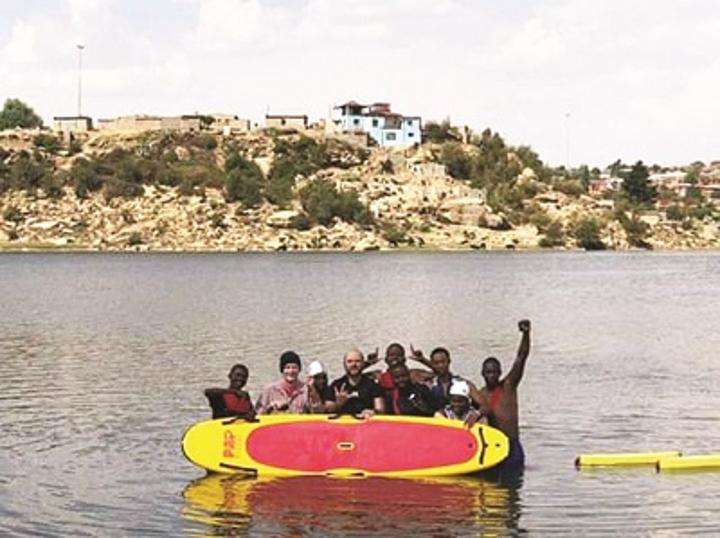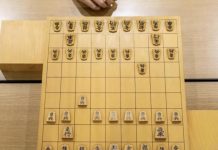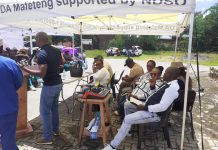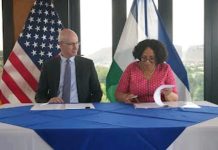Africa-Press – Lesotho. Drowning is one of the social challenges that has bedevilled many communities in the country. Elsewhere, drowning is defined as “the process of respiratory impairment as a result of
submersion in a liquid medium”. The World Health Organisation (WHO) notes that drowning is the third leading cause of unintentional injury death across the
world; it accounts for seven percent of injury-related deaths. It further estimates that there are about 320 000 reported deaths annually in the world resulting from drowning.
Despite that drowning may occur every time, it usually occurs during the summer seasons where there are lots of rains. Drowning peaks as people visit dams and rivers
for swimming, especially young people. Notably, during the festive and in the beginning months of the year, there are many incidents of drowning reported about people who are believed to be crossing to
the neighbouring South Africa in search for better economic prospects. Small children on the other hand fall prey to drowning in uncovered ditches at the villages.
According to the International Life Saving Federation, one of the survival techniques within the aquatic environment is that of person survival, which is the ability
to “help oneself from trouble in the water without the help of others, or being able to keep from drowning while awaiting help”. It goes on to say, the
personal surviving skills are: orientating oneself underwater, surviving floating which include Heat Escape Lessening Position (HELP) and the ability to
tread water and sculling. Given that a search can go for hours and even last for days, the Royal Lesotho Lifesaving Association (RLLA) has set out to save the drowning victims in dams
and rivers in the country. The members of this association scour riverbanks and dams to recover the bodies which have drowned in waters. The Informative
Newspaper had recently had an interview with the association’s Chief Instructor and Senior Examiner Motlatsi Mokola. He said a lifesaver should be able to “identify someone who is drowning and someone who is faking it” in the
course of discharging their duties. “Drowning is normally silent and a lot of casualties quickly get tired so one has to have a quick reaction time,” he
said. He further highlighted that for one to become a lifesaver they ought to undergo the lifesaving trainings that are conducted by qualified instructors,
also they should pass their exams at the completion of their training. The Senior Examiner also noted that “they should have better understanding of the
dangers of water and they should know how to perform CPR [Cardio-Pulmonary Resuscitation]”. He said people should learn how to swim. Mokola also mentioned other drowning
prevention techniques as: to avoid swimming alone, swimming at places supervised and patrolled by lifeguards, swimming within one’s capability and avoiding swimming under the influence of alcohol.
He went on to stress that, “parents should always supervise their children at any time they are within the aquatic area”. “In short, people should learn how to
prevent drowning by making sure that danger zones are spotted and patrons are aware if the casualty gets in danger. They must be able to recognise casualties
in distress. “They should be able to provide floatation for the victim then remove it from the water only if its save to do so, lastly they should provide after care and also
advised to seek medical attention,” Mokola advised taking stock of the knowledge gap identified in some of the places which has water and could be potential drowning spots.
Asked what factors could lead to loss of life during drowning, he said there are numbers of those. They are: shock, cardiac arrest, injuries, not being able to
swim, panic in the water, unattended baths (beaches or swimming pools), unattended children, concussion, seizures, or heart attacks. “I suggest people should not go there but if it happens I suggest they throw a
floating object to the victims for them to grab and encourage them to kick their legs so that they can move to the shore or wall if it in the pool. Or
bystanders can throw the rope to the victim then once he grabs it they would pull him out. But with my honest opinion if it’s the ocean and there are no
lifeguards please don’t swim,” this he said reflecting on the questions posted to the effect that a person has drowned and there are no lifeguards and no one
with swimming skills. Also the Youth Representative in the Executive Committee of the RLLA, Mokola said their latest attempt had proven the hardest as they did not succeed in the operation
despite covering a distance of around 20 km in search of a body said to have drowned in Litšoeneng river in the Mafeteng district. He said him and four others went on a body recovery mission
to assist recover the body of a boy who drowned last week Monday, the 18th. Despite arriving late in the afternoon, he mentioned that they searched for
about an hour and then continued the next day. “So we started earlier on Wednesday and the river flow was at another level so we started surfing from the highest flow of the river and what we observed was
that the river currents were taking us from the highest pressure to the lower pressure of water which was towards the left side of the river and that’s where
we had to focus on and then the deep and shallow search started. We searched for a distance between 18km to 20km without luck then we concluded with my team that looking at the pressure
of the water the body is not anyhow nearer then we aborted the mission and went to the family members and explained to them about our observations because we
didn’t leave any place unattended and we think the body is at the other side which is South Africa and we advise them to find means of communicating to the
people that side who might be near the Caledon river. “[We] left Mafeteng with broken hearts because our mission failed but later on Thursday we received a call from the family that the body was found towards Wepener
which has been the place we have been talking about that the next search should start there in case they get other people with better equipment than us,” this
Mokola said reflecting on their mission which they recently carried out. Although they did not recover the body, he expressed gratitude that they were able to
help in the search of the victim adding that they are “thankful that they finally found the body”. This is the third recovery mission that RLLA had undertaken.
However there are many others which the members of this association had embarked on individually. He said they are vying to join forces with the Lesotho Defence Force (LDF) and are
still in talks for that envisioned collaboration. Talking of the future of their association he said, they want to take “the lead in drowning prevention”.
“We are appealing to everyone who has some means of helping us to come. Our
doors are open, besides drowning affects us all so everyone is welcome to join us,” he appealed. The RLLA was established in 2004 by the Lesotho Durham Link. The association also offers trainings to prospective lifesavers who want to acquire drowning recovery skills.
For More News And Analysis About Lesotho Follow Africa-Press






